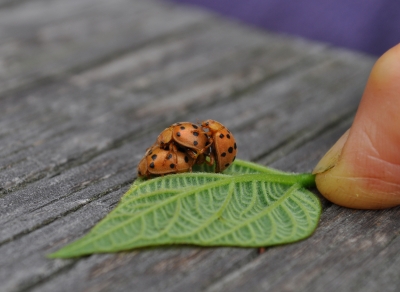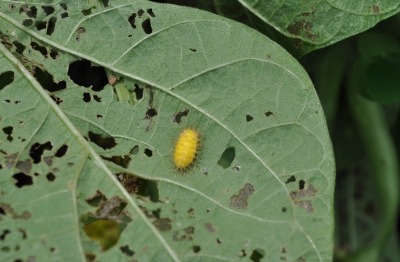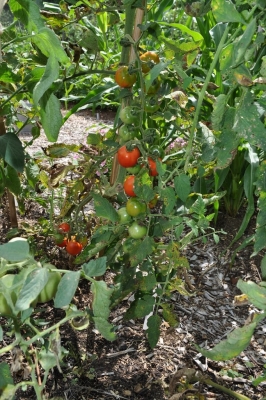A VERY GOOD YEAR, SO FAR
Bye, Bye Beetles
So far, this growing season has been one of the most interesting ever. Could it be global warming? Perhaps. Perhaps it’s all a legacy from the relatively snowless winter with long periods of cold, but not frigid, temperatures. Perhaps it was spring’s two nights of plummeting temperature that followed a warm spell. Perhaps it was this summers extremes of dry and wet periods. Perhaps all that’s from global warming. Perhaps . . .
All I know is that it’s all been pretty good. As I wrote previously, for the second year in a row, Japanese beetles made their entrance on time in June, and then, as if from stage fright, skittered away. Or never emerged from the soil. Or never hatched from eggs laid in the soil. Or the eggs never got laid last summer.
For years, Mexican bean beetles would lay eggs on my bean plants, and those eggs would hatch into voracious larvae and then adults that would shred bean leaves. I was able to harvest enough beans for fresh eating and freezing only with succession planting of bush beans every couple of months.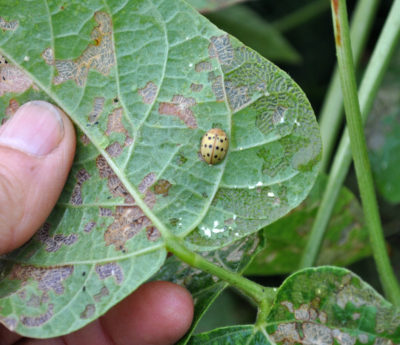
For the past couple of years, only a few beetles show up here and there; nothing to worry about. So now an early sowing of bush beans provides the first plates of beans, and then passes the torch on to pole beans, which unlike bush beans, keep yielding till the end of the season. Bush beans peter out after a few pickings.
(I did spray neem oil and the biological insecticide ‘Entrust’ a few years ago. Perhaps that broke the Mexican bean beetle cycle here. Perhaps it was the mere threat of a wall at the Mexican border . . . No, no, that can’t be it. Mexican bean beetles have established themselves north of the border for many generations, human and beetle. Throughout the country over many decades, this pest has waxed and waned in its severity, at times turning its taste to soybeans, sometimes to lima beans. My beetles never showed an appetite for my soybeans.)
Two other pests that, I hope, can now be off my radar are scale insects on the greenhouse figs and flea beetles on the eggplants. That status comes with some effort on my part: weekly sprays, until recently, of “summer oil.” I expect to have to maintain those efforts every season. (Late update: I saw a few scale insects on the figs so did have to spray again.)
Skyrocketing Corn, De-Luscious Blueberries
This season’s interests aren’t all about pests.
Right now, corn stalks are as high — no, higher — than an elephant’s eye. (For journalistic accuracy, I looked up the height of an elephant’s eye. One report on the web, that fount of highly accurate information, reported the median height at 98 inches.) I just stepped away from my desk to measure the actual height of my corn, and it topped out at about 10 feet high. And that’s the variety Golden Bantam. I’ve grown it for many years, during which it always topped out at 6 or 7 feet.
The first ears of this rich-tasting, old variety should be ready any day now. Will they also seem to be on steroids?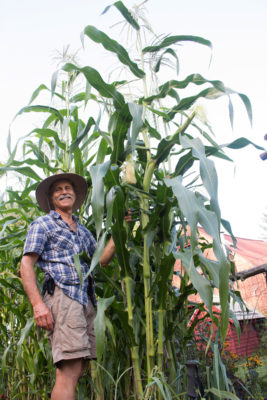
No explanations for this corny behavior jump out. Year after year, the soil gets the same one-inch depth of compost, the 3-foot-wide corn bed is planted in two rows of hills, thinned to 3 stalks per hill, with each hill 2 feet apart in the row, and the bed is drip irrigated. Mislabeled seed can’t explain the phenomenon because this season’s popcorn (Dutch Buttered and Pearl) and polenta corn (Otto File) also have higher aspirations. Anyway, I’m not complaining.
Apples never grow well here. This low lying valley is a sink for colder, moister air that, along with the backdrop of thousands of acres of forest, is a haven for apple pests. This season, with some spray assistance from me, the apple crop is relatively heavy and attractive. Apples, in those years when I do get a decent crop, are especially tasty here.
I have to tip my hat, once again, to blueberries, my favorite fruit and the most consistent performer among my many fruits. I have never not gotten a good crop of blueberries, come hell or high . . . 17 year cicadas, hurricane Irene, late frosts, etc. This season, canes are arching to the ground with a particularly heavy crop of berries.
What will next year hold? An even better growing season?


